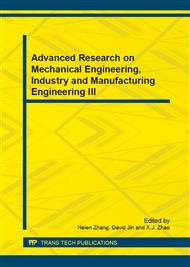p.263
p.268
p.272
p.277
p.281
p.285
p.290
p.294
p.298
Modeling of Engineering Ceramics Grinding Surface Residual Stress
Abstract:
Because of hard and brittle properties of ceramic materials, grinding and polishing the surface is the main processing methods, after grinded and polished, ceramics surface appear residual stresses and resulting in the cracks. Ceramic grinding surface residual stress are caused by machinery and thermal stress, residual stress generation mechanism is due to the combined effection under various stress, the workpiece transient temperature field can be calculated by triangle moving heat source model, the stress-strain relationship can be carried out in plastic region. according to the relationship between displacement increment and strain increment, can calculate element strain rate,in strong grinding, due to heat transfer time increases and the contact arc length increases, the maximum temperature is proportional to the available between the unit width and grinding ratio contact length, two regression method is used in study the effect of grinding parameters on surface residual stresses.
Info:
Periodical:
Pages:
281-284
Citation:
Online since:
August 2013
Authors:
Keywords:
Price:
Сopyright:
© 2013 Trans Tech Publications Ltd. All Rights Reserved
Share:
Citation:


